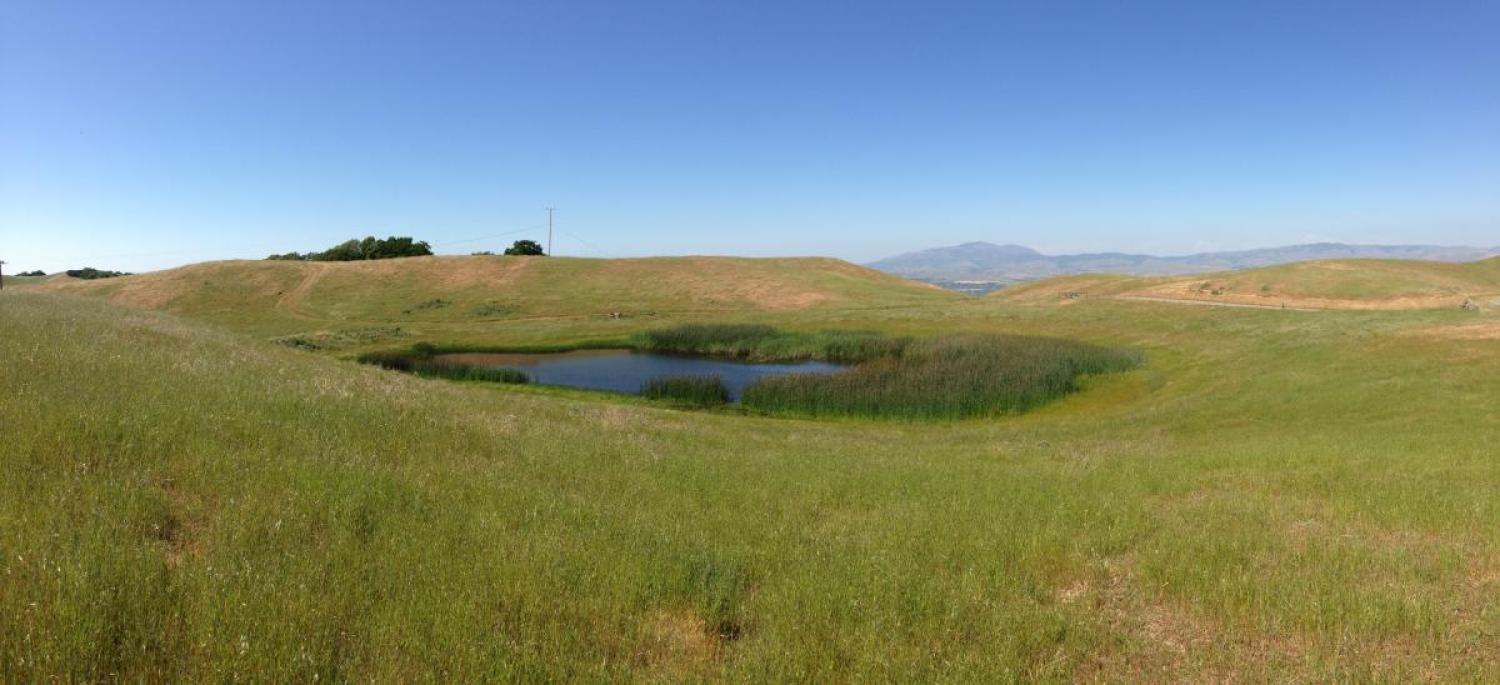Our troubled waters
Freshwater ecosystems are in the midst of a biodiversity crisis, with more threatened or extinct species than terrestrial and marine ecosystems combined. These systems are often confronted with threats from invasive species, infectious diseases, climate changes, and direct destruction. In many cases, however, the mechanisms through which multiple forms of environmental change interact with one another remain poorly understood, which can limit opportunities for effective conservation. Working in aquatic ecosystems, we strive to understand how different types of both abiotic (e.g., water availability) and biotic (e.g., invaders and pathogens) factors individually and collectively affect the persistence of native species, the resilience of natural communities, and the ecosystem processes inherent to fresh waters.

The project
In California and Colorado, we are exploring dynamic interactions among invasive species, infectious diseases, habitat losses, and drought. Within these systems, native amphibians (frogs, toads, newts and salamanders) have been especially hard hit by environmental change, such that they are now the most threatened class of vertebrates worldwide. Putative causes of observed declines are numerous and often controversial. Habitat loss and alteration are often considered among the most significant drivers of declines, but additional causes include infectious disease, introduced species, and changes in climate. Ultimately, however, drivers of amphibian population declines interact through complex mechanisms, leading to the destabilization of long-term population viability. Efforts aimed at conservation and habitat restoration must recognize the significance of such interactions if they are to be successful, yet most studies continue to assume the perspective of single-factor driven declines.
We currently have projects focused on droughts, non-native species (especially fishes and bullfrogs), and the emerging pathogen (Batrachochytrium dendrobatidis). Our overarching goal is to advance aquatic habitat restoration and conservation by examining interactions among major drivers of declines, including land use change, biological invasions, and the emergence of infectious diseases, with the aim of developing management guidelines pertinent to wetlands throughout the western USA.
Project publications
Vander zanden, M. J., Gorsky, A., Hansen, G. J. A., Johnson, P. T. J., Latzka, A. W., Mikulyuk, A., Rohwer, R. R., Spear, M. J., and J. R. Walsh (2024). Nine Lessons about aquatic invasive species from the North-Temperate Lakes Long-Term Ecological Research program. BioScience , 74: 509-523. https://doi.org/10.1093/biosci/biae062.
Sauer, E. L., Venesky, M. D., McMahon, T., A., Cohen, J. M., Bessler, S., Brannelly, L. A., Brem, F., Halstead, N., Hyman, O., Johnson, P. T. J., Richards-Zawacki, C. L., Rumschlag, S. L., Sears, B., and J. R. Rohr (2024). Are novel or locally adapted pathogens more devastating and why? Resolving opposing hypotheses. Ecology Letters 27: e14431. https://doi.org/10.1111/ele.14431.
McDevitt-Galles, T., Moss, W. E., Briggs, C. J. and P. T. J. Johnson (2022). How extreme drought events, introduced species, and disease interact to affect threatened amphibian populations. Freshwater Biology 41: 680-694. https://doi.org/10.1086/722679.
Wilber, M. Q., Johnson, P. T. J., and C. J. Briggs (2020). Disease hotspots or hot species? Infection dynamics in multi-host metacommunities controlled by species composition, not source location. Ecology Letters, 23: 1201-1211. https://doi.org/10.1111/ele.13518.
Grant, E. H. C., Willer, D. A. W., Schmidt, B. R., Adams, M. J., Amburgey, S. M., Chambert, T., Cruickshank, S. S., Fisher, R. N., Green, D. M., Hossack, B. R., Johnson, P. T. J., Joseph, M. B., Rittenhouse, T., Ryan, M., Waddle, J. H., Walls, S. C., Bailey, L. L., Fellers, G. M., Gorman, T. A., Ray, A. M., Pilliod, D. S., Prices, S. J., Saenz, D., Sadinski, W. and E. Muths (2016). Quantitative evidence for the effects of multiple drivers on continental-scale amphibian declines. Scientific Reports 6: 25625.
Joseph, M. B., Preston, D. L. and P. T. J. Johnson (2016). Integrating occupancy models and structural equation models to understand species occurrence. Ecology 97: 765-775.
Stewart-Koster, B., Olden, J. D., and P. T. J. Johnson (2015). Integrating landscape connectivity and habitat suitability to guide offensive and defensive invasive species management. Journal of Applied Ecology 52: 366-378.
Peterson, A. C., Richgels, K. L. D., Johnson, P. T. J., and V. J. McKenzie (2013). Investigating the dispersal routes used by an invasive amphibian, Lithobates catesbeianus, in human-dominated landscapes. Biological Invasions 15: 2179-2191.
McMahon, T. A., Brannelly, L. A., Chatfield, M. W. H., Johnson, P. T. J., Joseph, M. B., McKenzie, V. J., Richards-Zawacki, C. L. and J. R. Rohr (2013). Chytrid fungus Batrachochytrium dendrobatidis has non-amphibian hosts and releases chemicals that cause pathology in the absence of infection. Proceedings of the National Academy of Sciences 110: 210-215.
Johnson, P. T. J., Hoverman, J. T., McKenzie, V. J., Blaustein, A. R. and K. L. D. Richgels (2013). Urbanization and wetland communities: applying metacommunity theory to understand local and landscape effects. Journal of Applied Ecology 50: 34-42.
Preston, D. L., Henderson, J. S. and P. T. J. Johnson (2012). Community ecology of invasions: direct and indirect effects of multiple invasive species on aquatic communities. Ecology 93: 1254-1261.
Johnson, P. T. J., McKenzie, V. J., Peterson, A. C., Kerby, J. L., Brown, J., Blaustein, A. R. and T. Jackson (2011). Regional decline of an iconic amphibian associated with elevation, land-use change, and invasive species. Conservation Biology 25: 556-566.
Olden, J. D., Vander Zanden, M. J., and P. T. J. Johnson (2011). Assessing ecosystem vulnerability to invasive rusty crayfish (Orconectes rusticus). Ecological Applications 21: 2587-2599.
Blaustein, A. R., Han, B. A., Relyea, R. A., Johnson, P. T. J., Buck, J. C., Gervasi, S. S. and L. B. Kats (2011). The complexity of amphibian population declines: understanding the role of cofactors in driving amphibian losses. Annals of the New York Academy of Sciences 1223: 108-119.
Johnson, P. T. J., Olden, J. D., Solomon, C. T. and M. J. Vander Zanden. (2009). Interactions among invaders: community and ecosystem effects of multiple invasive species in an experimental aquatic system. Oecologia 159: 161-170.
Johnson, P. T. J., Olden, J. D. and M. J. Vander Zanden (2008). Dam invaders: impoundments facilitate biological invasions into freshwaters. Frontiers in Ecology and the Environment 6: 357-363.
Project links

